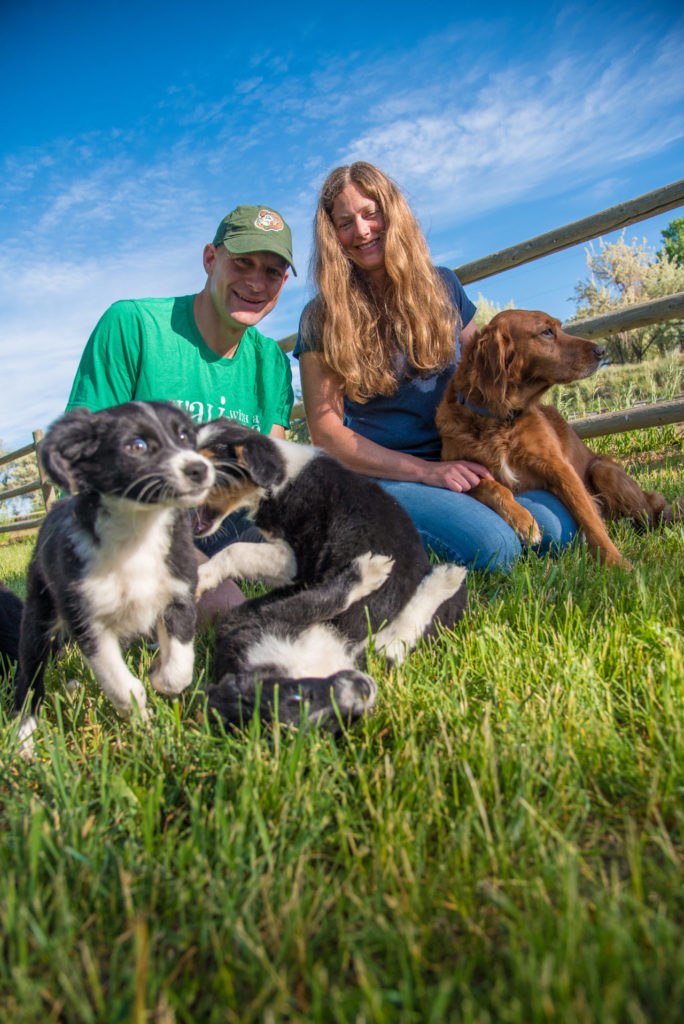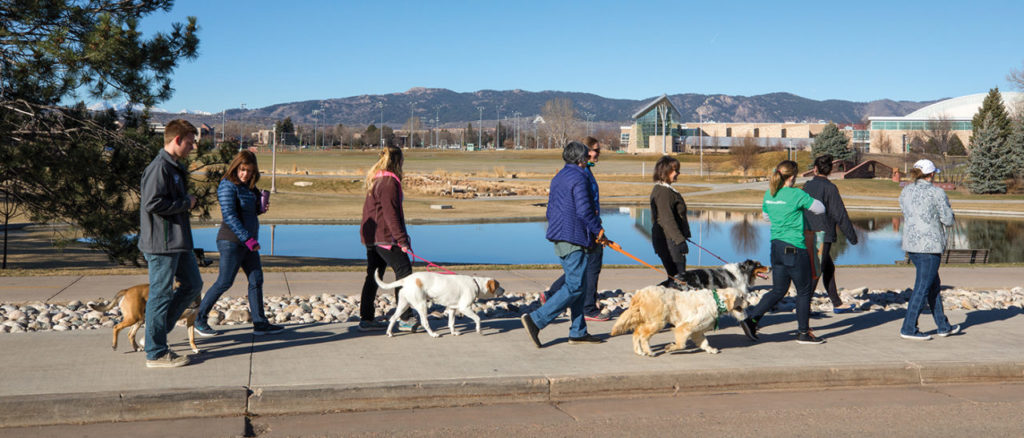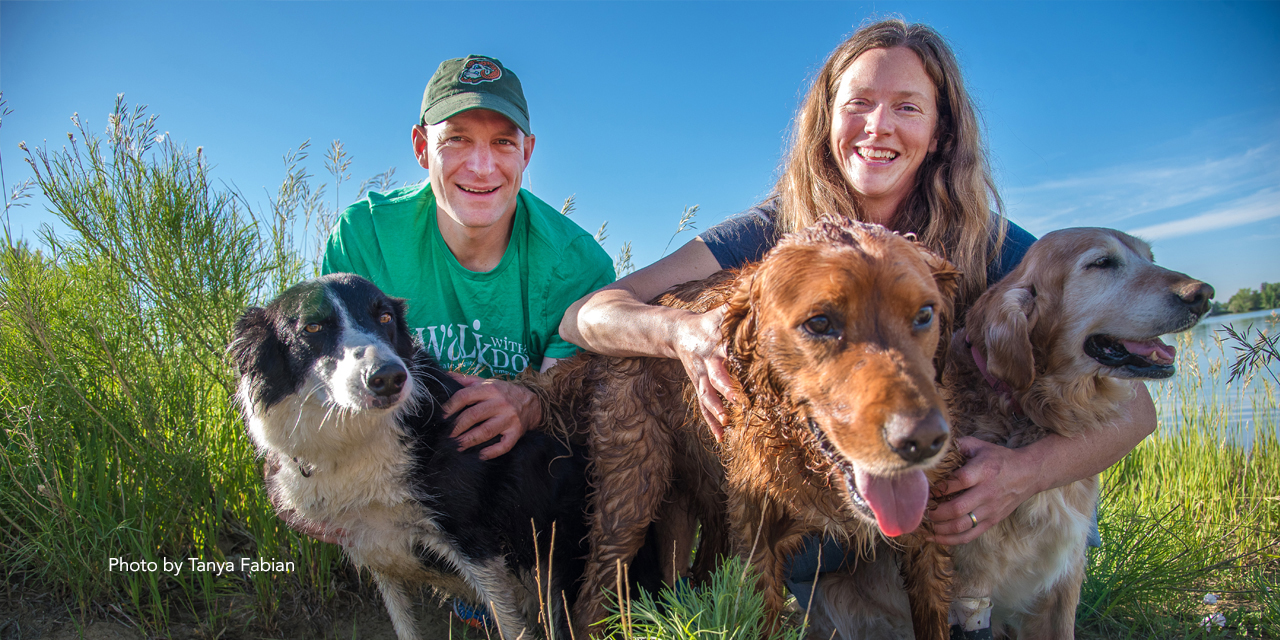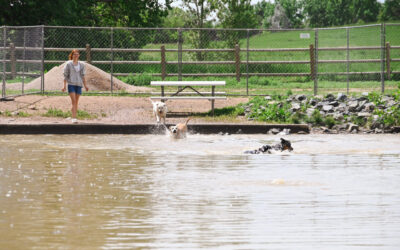A doctor developed a groundbreaking program seeking to inspire activity by example. In Northern Colorado, CSU professors have added dogs to the mix.
Would you rather take a walk on a treadmill or take a walk in the park? If you prefer to burn calories in a natural setting, then why not do it with a few added benefits you may not have considered before? Oh, and one more thing…your dogs are invited! Welcome to Walk with a Doc and a Dog.
Walk with a Doc was founded in 2005 by Dr. David Sabgir, an Ohio cardiologist who started the walks for his patients as a way to get them to exercise. He asked them to join him and his family on a Saturday morning for a walk in the park. For the first walk, a hundred people showed up. Now it’s a national program where doctors lead by example to encourage their patients to be physically active. It’s an effective way for doctors to help their patients literally take the necessary steps to better health.

CSU professors (and husband and wife) Felix Duerr, DVM, and Colleen Duncan, DVM, adapted the Walk with a Doc program to add dogs. Each month, the walks feature an academic specialist who shares their expertise while walking with participants. Photo by Tanya Fabian
So, what about Walk with a Doc and a Dog? The addition of dogs to Walk with a Doc got its start in Iowa a few years ago, but only a handful of the 370 chapters host similar events. You can thank Colorado State University professors Colleen Duncan, DVM, and Felix Duerr, DVM, for bringing the program to Fort Collins. Duncan heard Sabgir speak at a conference on human/animal obesity. Both Duncan and Duerr thought the program was ideal for the Fort Collins community, and Duerr thought a great way to connect it with the veterinary program was to invite owners to bring their dogs on the walks. Duncan and Duerr reached out to Sabgir’s organization, and CSU Walk with a Doc and a Dog was born.
Duerr and Duncan give credit to the leadership team, faculty advisers, and members of the CSU One Health Club, who are the logistic drivers of the program. The club is open to all CSU students, faculty and staff, and anyone in the community who wants to join. For students, the club provides opportunities to create practical health programs and initiatives. “For example, the vet students are now exploring possibilities of going to senior centers to hold walks so that people who aren’t able to have a pet can have that interaction,” says Duncan. “The students are very passionate about it and help to make it possible.”
Walk with a Doc and a Dog is a unique opportunity for academics to share health information with the community. In June, CSU disease ecologist Dan Salkeld discussed ticks and the diseases they carry, an apt topic for walkers.
“People are excited to talk about what they’re working on and how their work impacts the community or the world,” says Duerr. CSU has so many researchers doing interesting, groundbreaking work, but they have very little public interface. “We’re open to individuals who want to come and share their work at these events,” says Duncan. The Humane Society will also be attending some of the walks with dogs that need homes.

When Walk with a Doc and a Dog debuted in February, about 40 participants turned out. Courtesy of CSU
Walk with a Doc and a Dog debuted in Fort Collins in February, and 35 to 40 people showed up. The number of people who attend the walks varies, but attendance so far has been encouraging to Duncan and Duerr. Area resident Kate Berens has been on every walk. She likes it for several reasons: It’s an opportunity for her dog to socialize with other dogs, it’s good exercise, the topics are interesting, and she gets to engage with people she might never meet otherwise. “The social connectivity is an important benefit of this program,” says Duncan.
So is prevention. Prevention is an extremely important piece of overall health outcomes, but prevention doesn’t get a lot of attention because the effects are not often seen until decades later. “Regarding prevention, the four big things that are issues are diabetes, heart disease, cancer and arthritis,” says Duerr. These chronic diseases have a huge impact on the health, quality of life and longevity of both humans and their pets. Duerr stresses that you don’t need to run marathons to get the benefits of exercise. Regular low-impact exercise such as walking has a positive effect on health. “Then there are the secondary effects of happiness that come with it,” he says, “which in turn creates all of these other benefits that result from mental well-being.”
And it’s not just about physical exercise; it’s about exercising outdoors. “There are all these health benefits to exercise, but when you add the outdoors to it, you get additional benefits,” says Duncan. “There are studies that show the documented benefits of exercising in the outdoors that go beyond exercise itself.” Nature provides mental health benefits that you just don’t get from running on a treadmill.
There are other programs that encourage people to get outside, such as Park Rx, started by a doctor who wanted to demonstrate the health benefits of spending time in nature, and Nature in the City, an initiative that seeks to connect all citizens of a region with nearby access to parks and other natural areas. These are all ways to get people to be more active, to get out and enjoy the benefits of nature, and to connect with others in their community. For information on future walks, check out the CSU Walk with a Doc and a Dog Facebook page: www.facebook.com/CSUWWDD/.
Samantha Prust is a Fort Collins-based freelance writer. To comment on this article, send an email to letters@nocostyle.com.






